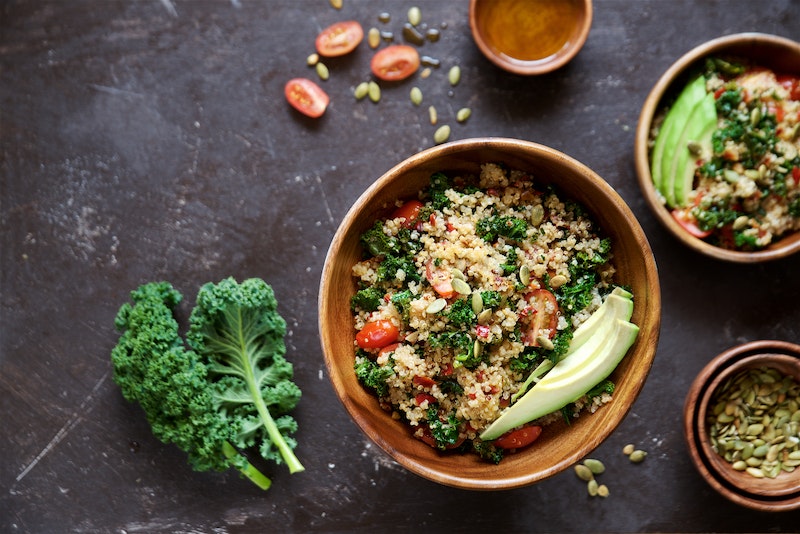Everyone knows that one pillar of a healthy diet is eating plenty of fresh vegetables. Building a salad for lunch is one easy way to raise your daily intake. But choosing a salad can have other benefits, too. With the right mix of healthy proteins and carbs, says Dana Lis, PhD, RD, the high performance sport nutritionist who supports the women on the Rally UHC Cycling Team, “salads can pack a huge amount of nutrients into a well-rounded, post-workout meal.”
For Rally UHC’s cycling pros, hitting the salad bar isn’t just about refueling, post-ride — it’s a bonding experience. They’ve even started their own Instagram hashtag, #saladclub, to capture their picture-perfect, nutrient-packed, rainbow-colored concoctions. We asked nutrition experts and our cycling pros for their tips for building hearty, healthy, Insta-worthy salads. Here’s how they load their plates.
Pick a nutrient-packed base
Dark, leafy greens such as spinach, kale, or arugula are great foundations for your salad. Compared with iceberg and romaine, they’re better sources of iron, says Lis, “and pack a lot of fiber, which is super important for your gut health.” Salad Club co-founder Abby Mickey loves starting with a base of peppery arugula.










